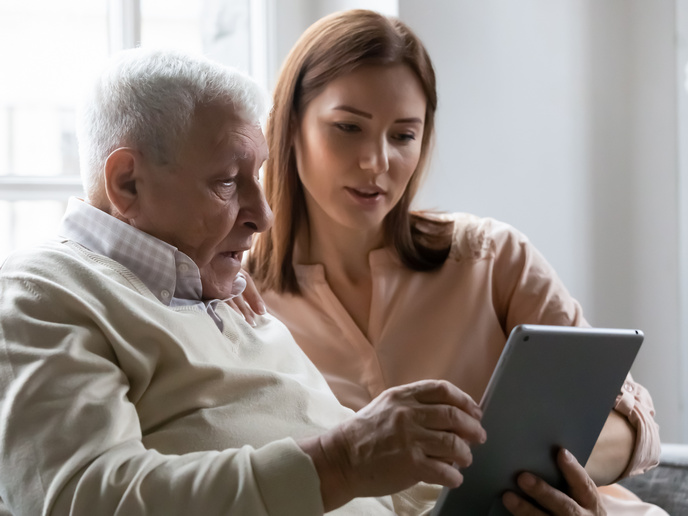Ageing well with technology
It is estimated that at least a quarter of the EU’s population is aged 60 years or over. But, as they say, ’60 is the new 40’. After all, just as Europe’s population is ageing, life expectancy is increasing – meaning more people are living longer. The challenge, however, is to ensure a high quality of living during one’s golden years. “Reaching retirement age should not mean losing a sense of purpose or the ability to remain involved in society,” says Mac MacLachlan, director of the Assisting Living and Learning Institute(opens in new window) at Maynooth University(opens in new window), Ireland. According to MacLachlan, sustaining longer and healthy lives requires solutions that prevent or minimise the risk of injury, frailty and long-term chronic diseases. Helping to provide such solutions is the EU-funded SHAPES(opens in new window) project. “With the aim of giving older people a sense of belonging and opportunities to participate, the SHAPES project sought to find ways to help people stay living in their homes and active in their communities,” adds MacLachlan, who served as the project coordinator.
Digital and assistive technologies
At the heart of the project is technology – including a range of digital and assistive technologies. “These solutions communicate through a platform, which allows them to interact with each other, share data and experiences and learn from each other,” explains Michael Cooke, head of the Department of Psychology, also at Maynooth University, who co-led the project with MacLachlan. One of those solutions is an in-home robot. Called Kompaï, the robot is programmed to conduct autonomous rounds in a home throughout the night. If it detects the person is outside the specified area, such as the bedroom, the robot asks them if they need help. It can then assist the person in getting to where they want to be, whether that be to the bathroom or back to the bedroom. The robot is also equipped with an alarm that can be activated in the case of a fall. “Kompaï has proven to provide older people with an enhanced sense of security in their homes during the night,” remarks Cooke. Other technologies developed during the project include: an app to create smart living environments that promote healthy lifestyles and independent living conditions; a tool to support remote and in-home rehabilitation; an easy-to-use video call solution; remote care and monitoring applications; and a dance pad to encourage physical activity.
Better opportunities for Europe’s ageing population
Thanks to the project’s interdisciplinary team of psychologists, anthropologists, economists, sociologists, designers, engineers, computer scientists, clinicians and older volunteers, the SHAPES project showed how technology can help people age better. “The end goal is that some of our innovative technologies and practices will be adopted by service providers and older individuals,” concludes MacLachlan. “We also hope that our work stimulates further research and projects that seek to create equal or better opportunities for Europe’s ageing population,” adds Cooke. In addition to demonstrating how technologies can connect users, clinicians and family members, the project has opened the door to moving some interventions that used to require a hospital visit into the home. It also developed a number of ethical practices, governance models and policy recommendations for supporting healthy ageing at the national and international levels.



